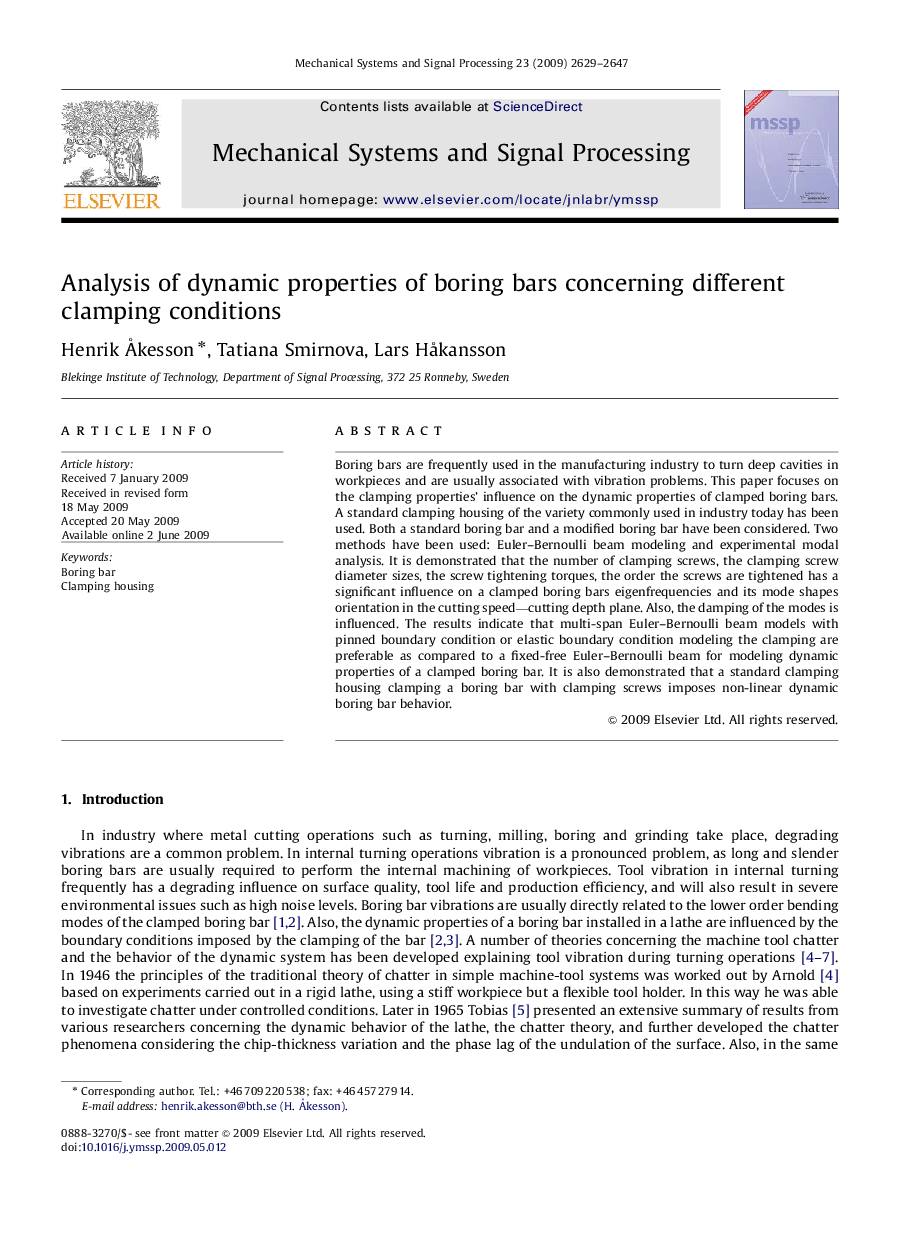| Article ID | Journal | Published Year | Pages | File Type |
|---|---|---|---|---|
| 561912 | Mechanical Systems and Signal Processing | 2009 | 19 Pages |
Boring bars are frequently used in the manufacturing industry to turn deep cavities in workpieces and are usually associated with vibration problems. This paper focuses on the clamping properties’ influence on the dynamic properties of clamped boring bars. A standard clamping housing of the variety commonly used in industry today has been used. Both a standard boring bar and a modified boring bar have been considered. Two methods have been used: Euler–Bernoulli beam modeling and experimental modal analysis. It is demonstrated that the number of clamping screws, the clamping screw diameter sizes, the screw tightening torques, the order the screws are tightened has a significant influence on a clamped boring bars eigenfrequencies and its mode shapes orientation in the cutting speed—cutting depth plane. Also, the damping of the modes is influenced. The results indicate that multi-span Euler–Bernoulli beam models with pinned boundary condition or elastic boundary condition modeling the clamping are preferable as compared to a fixed-free Euler–Bernoulli beam for modeling dynamic properties of a clamped boring bar. It is also demonstrated that a standard clamping housing clamping a boring bar with clamping screws imposes non-linear dynamic boring bar behavior.
